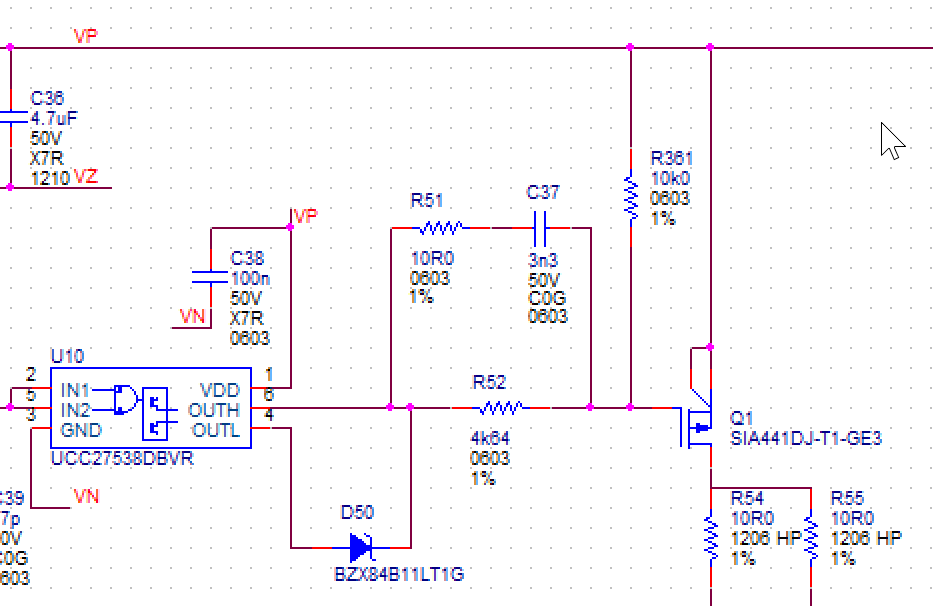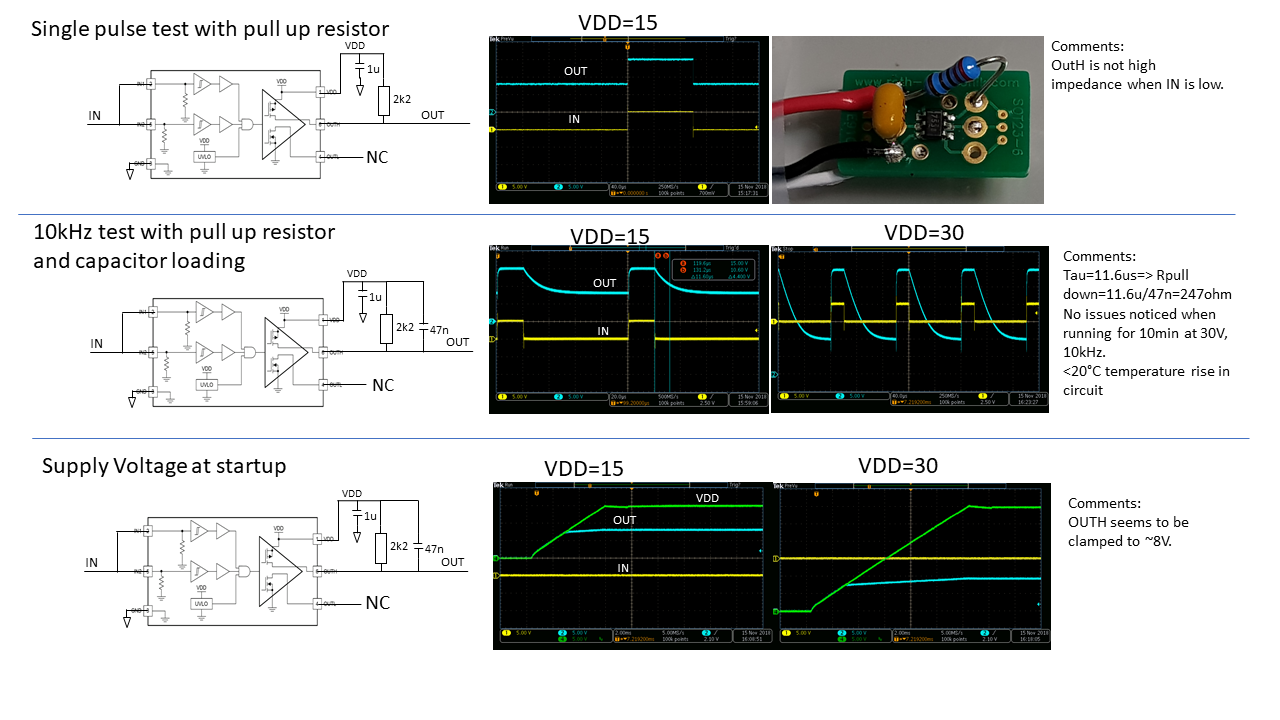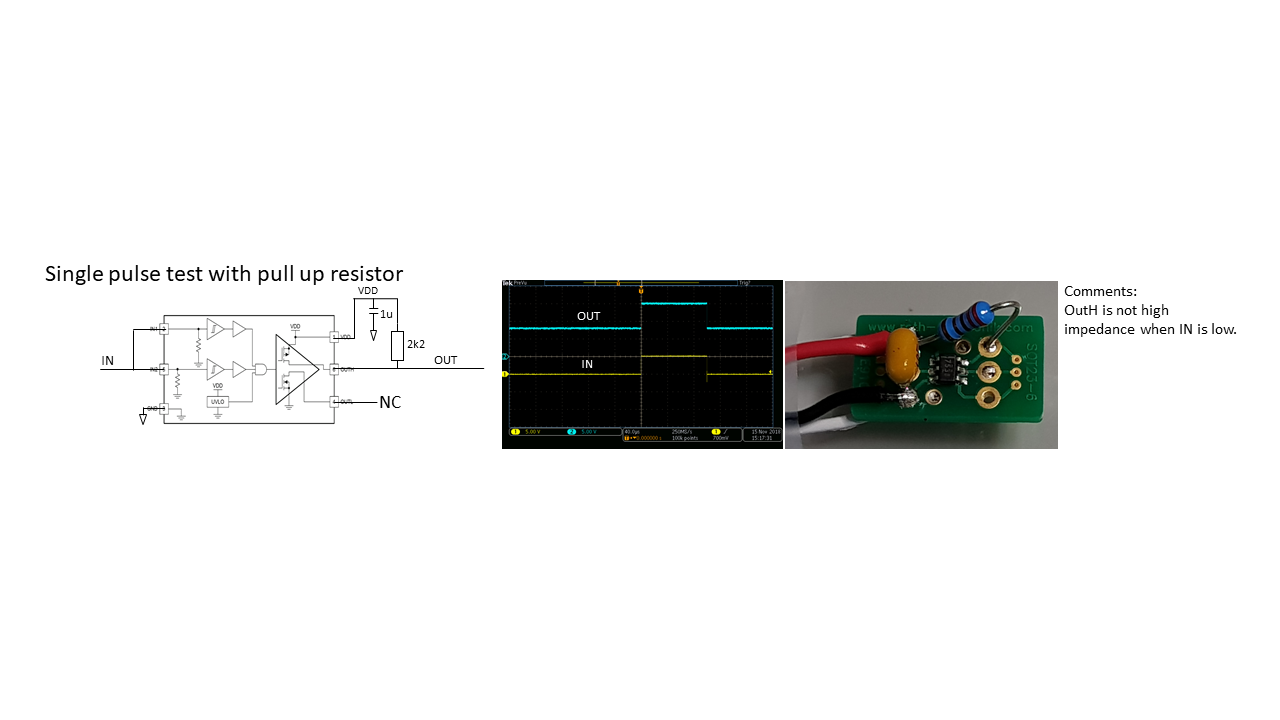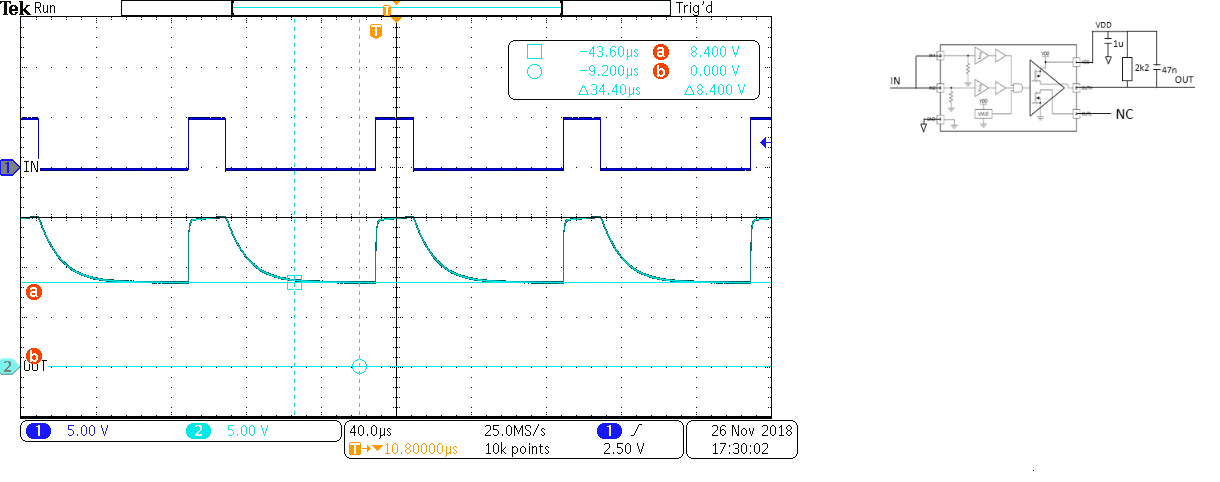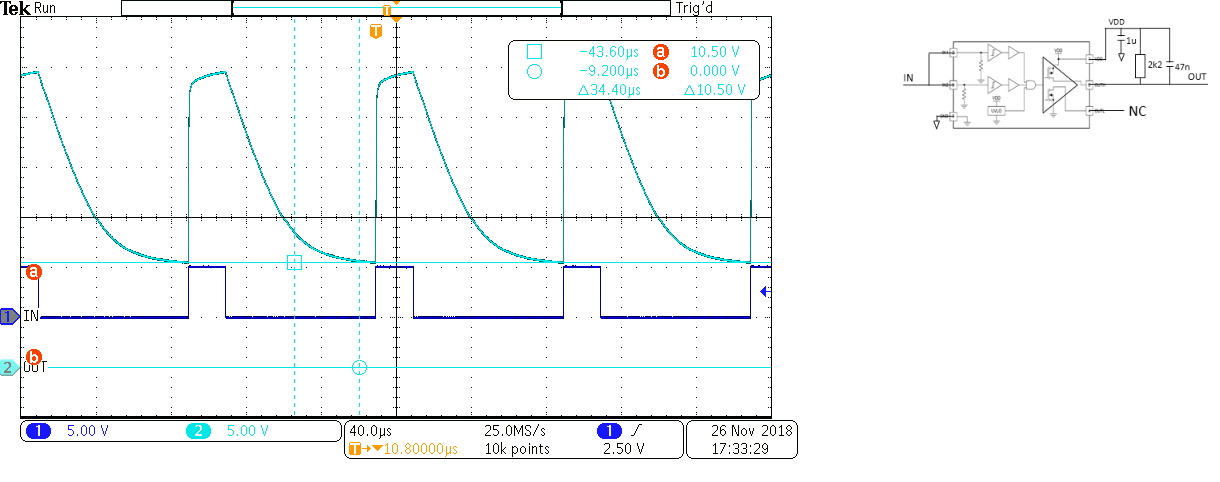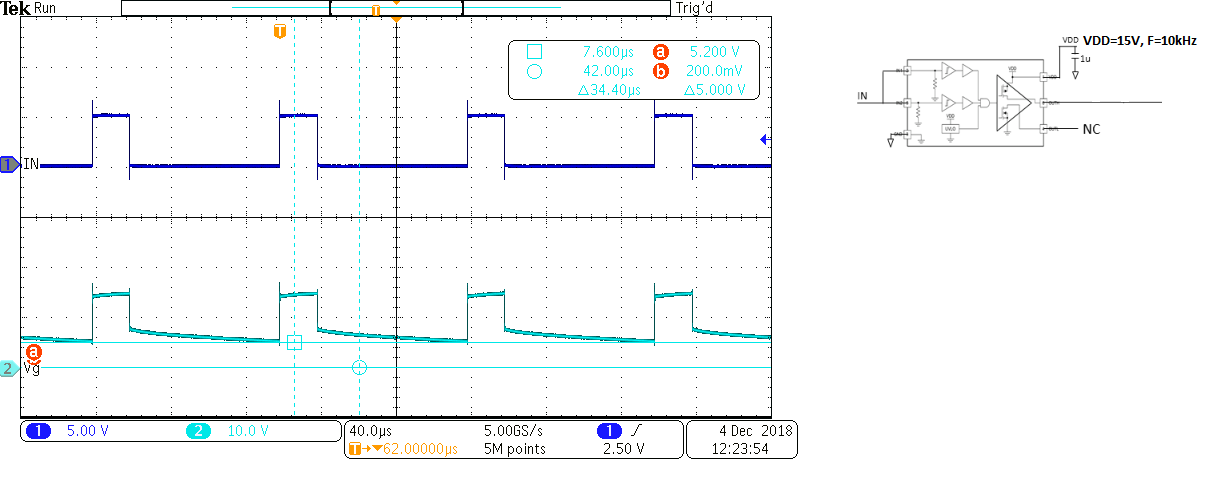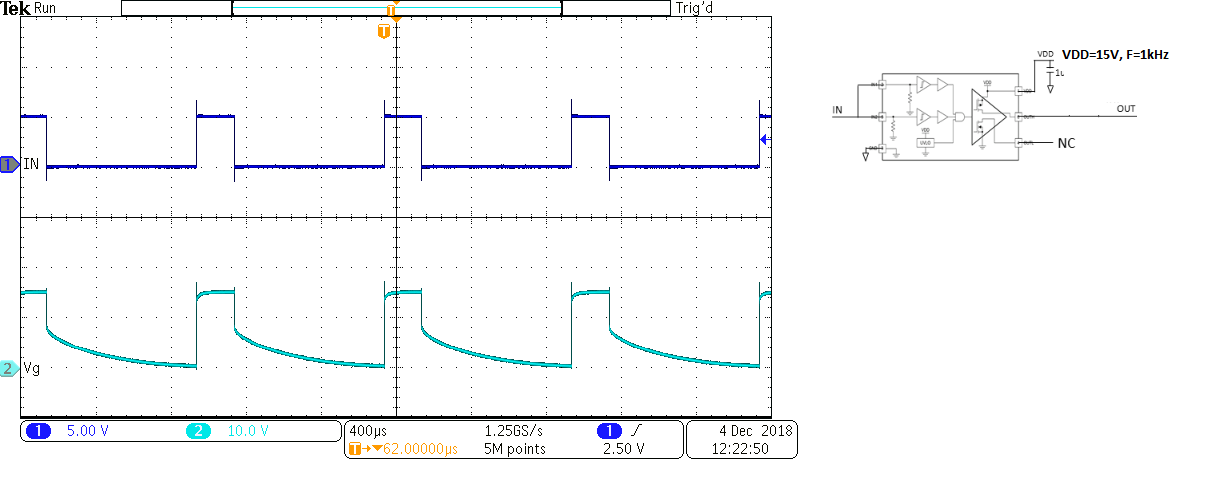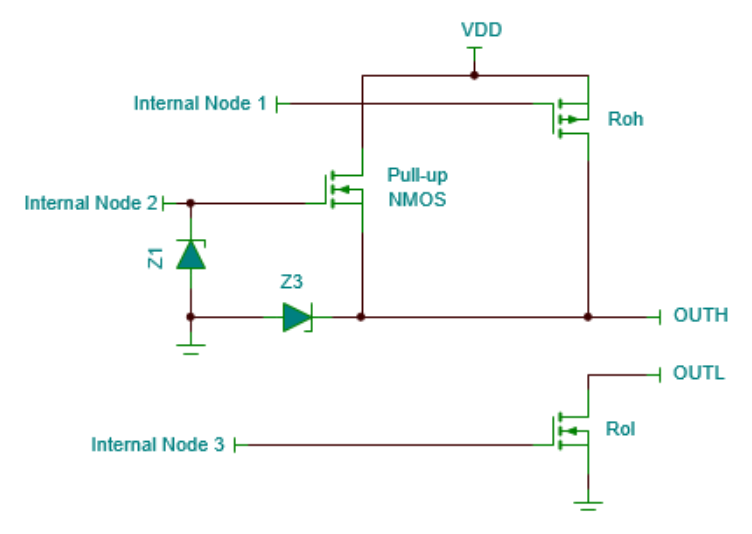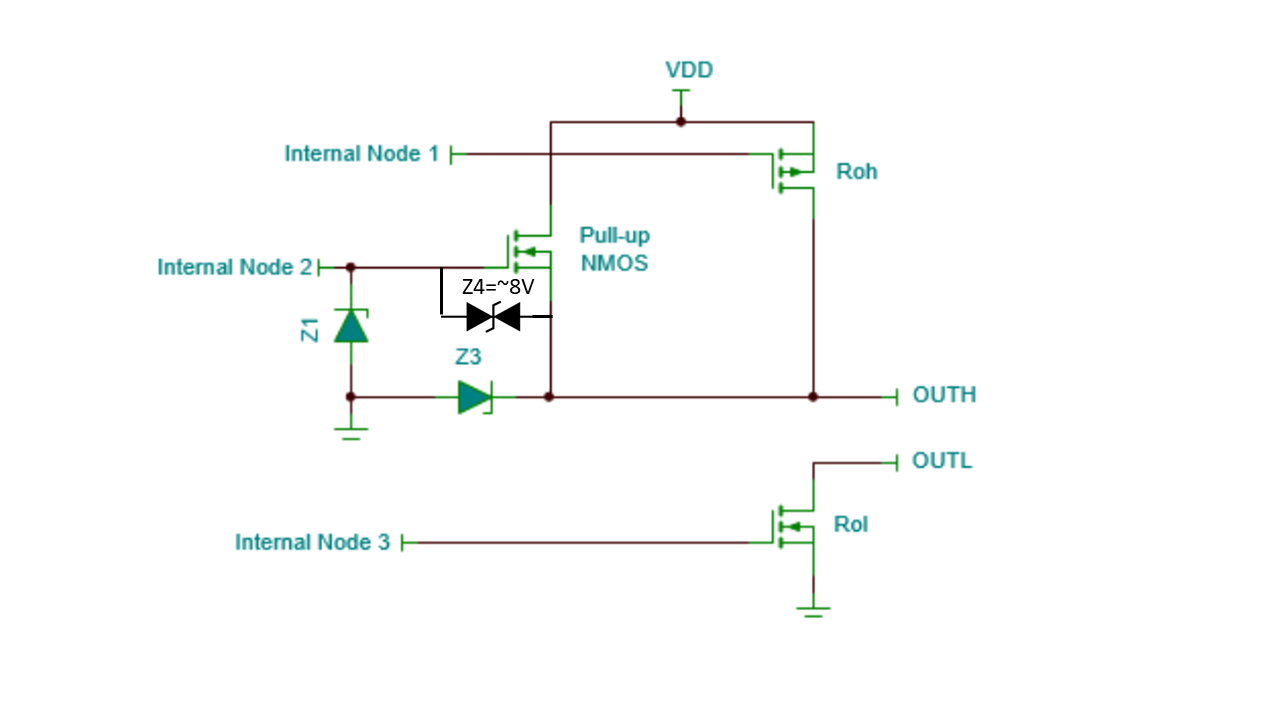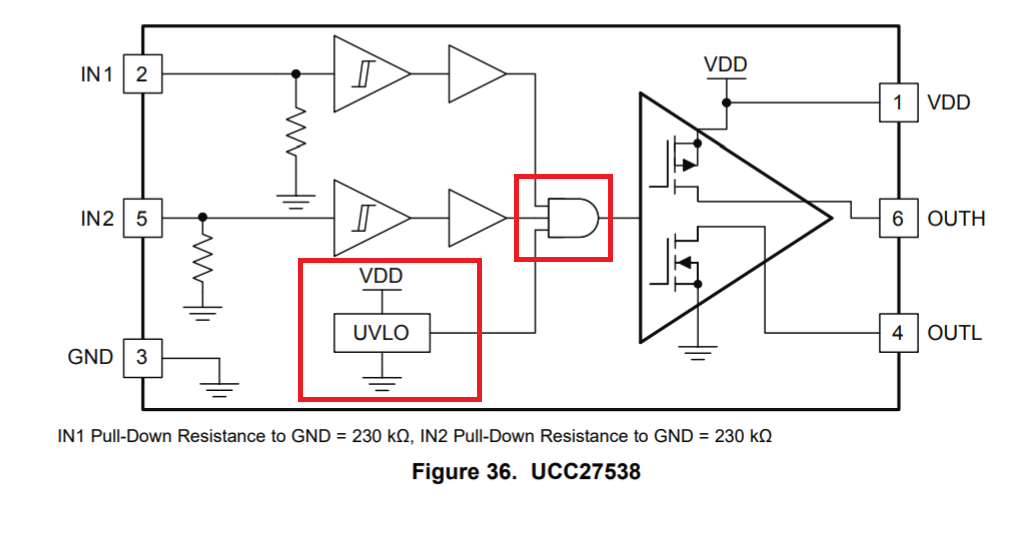Other Parts Discussed in Thread: UCC27531
Hi Ti
Is there some internal zener diode connected from OUTH to OUTL in UCC27538? (Similar to D50 in the schematic below)
It seems to pull OUTH down to ~8V, when input goes low, even though OUTL is left unconnected. (In below schematic it happens even though D50 is disconnected)
Can I damage the device by using this zener? (I switch with very low frequency <200Hz, and only charge a few nF through 10ohm)
See schematic below: (VP=21V, VN=0V)
Regards,
Tune


